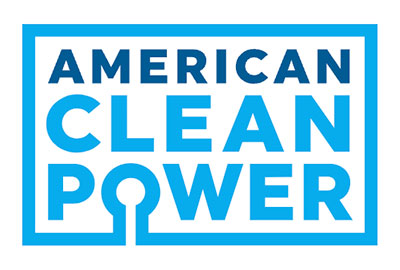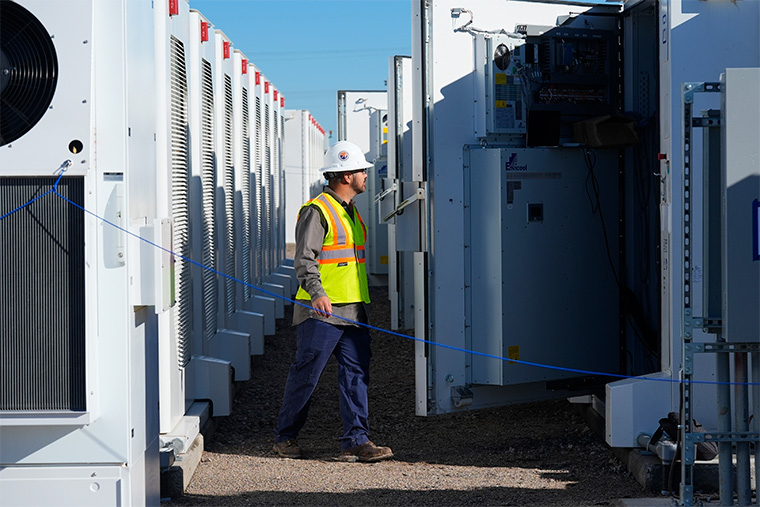 WASHINGTON, D.C. — A new report from Aurora Energy Research, commissioned by the American Clean Power Association (ACP), finds that the deployment of 4 GW of battery storage, enough to power 3.4 million homes during peak demand, across the Central U.S. could result in $7 billion in energy cost savings for American consumers, while significantly boosting reliability for the region.
WASHINGTON, D.C. — A new report from Aurora Energy Research, commissioned by the American Clean Power Association (ACP), finds that the deployment of 4 GW of battery storage, enough to power 3.4 million homes during peak demand, across the Central U.S. could result in $7 billion in energy cost savings for American consumers, while significantly boosting reliability for the region.
According to Aurora’s analysis, the Southwest Power Pool (SPP)* that covers Midwest states from North Dakota to North Texas, is expecting the largest percentage projected peak load growth over the next ten years of any Regional Transmission Organization, the organizations that coordinate, control, and monitor multi-state electric grids across the U.S. SPP has the second-largest geographic footprint and third-highest renewables penetration in the country, driven mainly by wind power generation.
Battery storage has the unique ability to capture excess power and deliver it to the grid when it is needed most, while also providing ready-to-deploy power, making the technology a natural complement to both renewables and thermal power plants. While SPP currently has less than 1 GW of storage built, the report highlights how other markets have shown that battery storage benefits reliability by dispatching at times of highest system demand, while also freeing up thermal generation to operate more efficiently.
“Evening power prices could be 80% lower in SPP if the region can build out the battery storage central states need to ensure reliability,” said Noah Roberts, ACP Vice President of Energy Storage. “As power demand surges, battery storage is one of the fastest and most effective ways to strengthen reliability and lower electricity bills. Grid batteries deliver significant cost savings for families and businesses, and provide the reliability needed to power our economy into the future.”
The report finds that if SPP and state policymakers harness the potential of energy storage:
- Energy storage resources could cut evening energy price spikes by more than 80% between now and 2035.
- More than 4 GW of battery storage can be affordably and quickly deployed over the next decade to meet rising demand for power and acute grid reliability needs.
- States in the SPP region could generate at least $2.2 billion in energy cost savings for consumers and businesses over the next decade, and more than $7 billion over the next two decades.
Hundreds of battery storage projects are currently in the SPP interconnection queue, working through lengthy permitting and regulatory reviews. These projects represent billions of dollars in economic investment, grid infrastructure upgrades, and energy cost savings, as well as thousands of local jobs. Grid-scale batteries can be deployed quickly to meet growing reliability needs, but several barriers continue to delay development. Historically, 58% of projects that entered the SPP queue have ultimately withdrawn.
To realize the full benefits of storage, both SPP and state policymakers must act to streamline approval processes and advance supportive policies such as:
- Accelerating interconnection to eliminate unnecessary delays in connecting new energy storage resources to the grid. Batteries can be built and brought online quickly, but lengthy bureaucratic process can force shovel-ready projects to wait years just to connect to the grid.
- Reform market rules to generate price signals that adequately incentivize storage development. At present, existing signals are insufficient to underwrite the costs of new entry. Additionally, market rules and accreditation should value storage’s reliability contribution comparably to other resources, avoiding structural disadvantages.
- Remove ambiguity on when storage must register as a transmission customer and how associated transmission charges are applied.
- Streamline and clarify permitting at the state and local level to ensure that new energy infrastructure can be built safely, responsibly, and quickly. Consistent rules for permitting energy storage projects can help lower project costs, enforce uniform standards, and create more certainty for all stakeholders.
“As energy demand soars across the country, the Southwest Power Pool, which is projected to see the fastest growth, has a chance to lead the way for reliability and cost savings,” said Stephanie Smith, COO of Eolian. “By streamlining their process for energy connection, SPP can unleash the power of batteries to store and supply excess, otherwise unused energy, to give consumers the power they need at costs that are affordable.”
“We’re building a modern energy system that’s ready for the future,” said Adrian J. Rodriguez, President of Xcel Energy – Texas, New Mexico. “By investing in a balanced mix of technologies, including renewables and battery storage, we’re strengthening electric reliability, managing customer costs and supporting the economic growth that’s driving demand across our region.”






